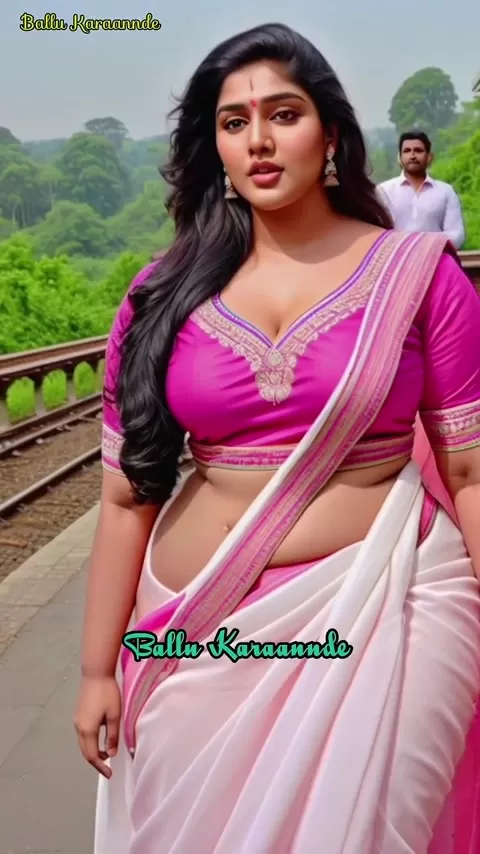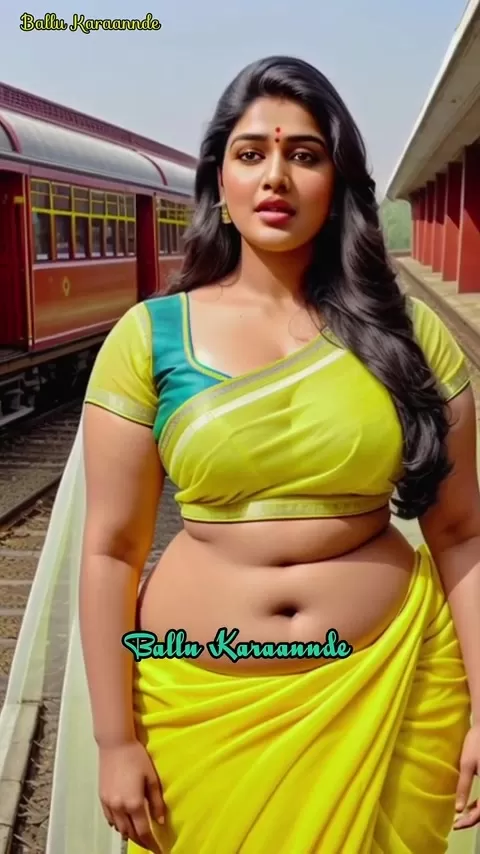Discovering the Enduring Beauty of the Indian Saree

 April 27, 2025
April 27, 2025

 CarlLewis
CarlLewis

 0
0
The Indian saree is more than just a piece of clothing; it's a symbol of grace and a testament to centuries-old traditions. It weaves together a rich tapestry of history, artistry, and the essence of femininity. Whether it's a simple cotton drape or an intricately embroidered silk masterpiece, the saree captures the vibrant and diverse spirit of India. Let's dive into the enchanting world of sarees, exploring their historical roots and modern flair.
The Saree: A Cultural Icon
The saree, or sari, is a traditional garment worn by women across India, Bangladesh, Sri Lanka, and Nepal. This unstitched wonder, typically ranging from 5 to 9 yards, is draped elegantly over the body and paired with a fitted blouse called a choli and a petticoat for support. The versatility of the saree is one of its most enchanting features; it can be worn casually or dressed up for formal occasions like weddings and religious ceremonies. The fabric, color, and embellishments can transform a saree from everyday wear to a statement piece for special events.
Beyond its aesthetic appeal, the saree embodies deep cultural and symbolic meanings in India. It's often linked with femininity, grace, and tradition. In some communities, it signifies marital status, with certain colors and patterns reserved for married women. The art of draping a saree is usually passed down from mother to daughter, preserving a cherished heritage.
Exploring Saree Fabrics
The charm of the saree is closely tied to the variety of fabrics used. Each type brings a unique texture and drape, enhancing the garment's overall allure. Here's a look at some popular saree fabrics:
- Cotton: Known for its comfort and breathability, cotton sarees are perfect for everyday wear, especially in warmer climates. They come in various weaves and textures, catering to both simplicity and intricacy.
- Silk: The epitome of elegance, silk sarees boast a lustrous sheen and smooth texture. Often adorned with detailed embroideries, they're ideal for special occasions. Notable types include Kanjeevaram, Banarasi, and Mysore silk.
- Georgette: Lightweight and flowy, georgette sarees are easy to drape and comfortable. Their slightly crinkled texture and vibrant prints make them suitable for both casual and formal wear.
- Chiffon: Even lighter than georgette, chiffon sarees have a delicate, airy feel, perfect for elegant and sophisticated looks. They drape beautifully and come in various colors and prints.
- Crepe: With a slightly textured surface and a soft drape, crepe sarees are wrinkle-resistant, making them practical for travel and daily use. They're available in a range of colors and prints.
- Net: Made from a sheer, mesh-like fabric, net sarees are modern and contemporary. They're lightweight and often embellished with intricate designs and sequins.
- Satin: Known for its smooth, glossy finish and luxurious drape, satin sarees are perfect for formal events. They come in various colors and prints, adding a touch of glamour.
Choosing the right fabric depends on the occasion, personal preference, and desired aesthetic. A cotton saree might be your go-to for a hot summer day, while a silk saree would be perfect for a grand wedding.
Regional Styles: A Tapestry of Diversity
India's cultural diversity is beautifully reflected in the regional styles of sarees. Each region has its unique weaving techniques, designs, and draping styles. Here are some highlights:
- Banarasi Sarees (Uttar Pradesh): Renowned for their opulent silk and intricate gold and silver brocade, these sarees are perfect for formal occasions. Their motifs often feature floral patterns, paisleys, and geometric designs.
- Kanjeevaram Sarees (Tamil Nadu): Known for their rich silk, vibrant colors, and distinctive zari borders, these sarees are traditionally woven with pure mulberry silk and adorned with gold zari work. Motifs often depict mythological figures and floral patterns.
- Paithani Sarees (Maharashtra): Characterized by vibrant colors and intricate peacock and floral motifs, Paithani sarees feature a distinctive tapestry weave. Often considered heirlooms, they're passed down through generations.
- Baluchari Sarees (West Bengal): These sarees are known for their silk fabric and elaborate narrative designs depicting mythological stories and historical events. Motifs often include scenes from the Ramayana and Mahabharata.
- Bandhani Sarees (Gujarat and Rajasthan): Featuring vibrant colors and distinctive tie-dye patterns, these sarees are created using a traditional technique where parts of the fabric are tied and dyed to create geometric or floral patterns.
- Patola Sarees (Gujarat): Highly prized for their intricate double ikat weaving technique, vibrant colors, and geometric designs, Patola sarees are often used for ceremonial purposes. Their creation is a time-consuming craft requiring skilled artisans.
Each regional style tells a story of cultural heritage and artistic tradition, making exploring them a journey through India's diverse cultural landscape.
The Art of Draping: A Touch of Elegance
The way a saree is draped can transform its look and feel. There are numerous styles, each with its unique flair and regional significance. Here are some popular ones:
- Nivi Style: The most common in India, where the saree is wrapped around the waist, pleated at the front, and draped over the shoulder. The pallu, or loose end, is typically draped over the left shoulder but can vary.
- Gujarati Style: Popular in Gujarat and Rajasthan, the pallu is draped over the right shoulder and brought around to the front, tucked into the waist.
- Maharashtrian Style: Unique in that it doesn't require a petticoat, the saree is draped around the waist and tucked at the back, creating a trouser-like effect.
- Bengali Style: Known for its elegant and flowing drape, the saree is wrapped around the waist, pleated at the front, and draped over both shoulders, with the pallu left loose and flowing.
- Modern Styles: These often blend elements from different regional styles and experiment with new draping methods, offering both fitted and flowing options.
Choosing a draping style depends on the saree type, occasion, and personal taste. Trying different styles can be a fun way to discover new looks.
Saree Blouses: The Perfect Match
The saree blouse, or choli, is crucial to the saree ensemble. It's a fitted garment that covers the upper body and supports the saree. Made from various fabrics like cotton, silk, and velvet, the blouse's design and style can range from simple to elaborate.

When choosing a saree blouse, consider:
- Fabric: Match the blouse fabric to the saree's fabric for a cohesive look. Silk sarees pair well with silk blouses, while cotton sarees match with cotton blouses.
- Color: Choose a blouse color that complements the saree. It can be matching, contrasting, or pick up an accent color from the saree.
- Style: Select a style suitable for the occasion and your preference. A simple blouse is great for everyday wear, while an embroidered one suits special events.
- Fit: Ensure the blouse fits well and provides support. Custom-tailoring can help achieve the perfect fit.
A well-chosen blouse can elevate the overall look of the saree, adding elegance and sophistication. Investing in versatile blouses that pair with different sarees is a smart move.
Blouse Necklines and Sleeve Lengths
The neckline and sleeve length of the blouse can significantly impact the saree's overall look. Here are some popular options:
- Necklines:
- Round Neck: A classic and versatile choice suitable for most body types.
- Square Neck: Flattering and elongates the neck and shoulders.
- V-Neck: Slimming and draws attention to the décolletage.
- Boat Neck: Elegant and emphasizes the shoulders.
- Halter Neck: Modern and exposes the shoulders and back.
- Sweetheart Neck: Romantic and heart-shaped.
- Sleeve Lengths:
- Sleeveless: Daring and best for toned arms.
- Short Sleeves: Classic and versatile with some coverage.
- Elbow Sleeves: Elegant and covers the elbows, ideal for formal occasions.
- Three-Quarter Sleeves: Sophisticated and falls between the elbow and wrist.
- Full Sleeves: Traditional and provides full arm coverage.
Experimenting with different neckline and sleeve length combinations can help find the perfect blouse to complement your saree and flatter your figure.
How to Drape a Saree: A Step-by-Step Guide
Preparing to Drape
Before draping your saree, gather these essentials:
- Saree
- Blouse (choli)
- Petticoat (underskirt)
- Safety pins
- Heels (optional, but recommended for correct length)
Ensure your petticoat is securely tied and your blouse fits comfortably. Wear heels if you plan to, as they affect the saree's length. Stand in front of a mirror for a clear view.

Step-by-Step Draping Instructions
Here's how to drape a saree in the Nivi style:
- Tuck the plain end of the saree into the petticoat at your navel. Wrap it around your waist, tucking as you go, until you reach your starting point.
- Create 5-7 pleats, each about 5-6 inches wide, with the remaining fabric.
- Tuck the pleats into the petticoat slightly to the left of your navel, ensuring they fall straight and evenly.
- Bring the remaining fabric (the pallu) around your waist and drape it over your left shoulder, adjusting the length to about knee level or slightly longer.
- Secure the pallu to your blouse with a safety pin to prevent slipping. You can also pleat the pallu and secure it for a structured look.
- Adjust the pleats and drape to your liking. Consider adding a belt or accessories to accentuate your waistline.
Practice makes perfect, so don't worry if it takes a few tries to get it right. You'll soon be draping sarees like a pro!
Saree Dress: Pros and Cons
Pros
- Timeless elegance and a graceful appearance
- Versatile for various occasions
- Wide range of fabrics, colors, and designs
- Reflects Indian culture and tradition
- Can be draped in various styles to suit different body types
Cons
- Can be challenging to drape and manage, especially for beginners
- May require assistance with draping for elaborate styles
- Fabric can be heavy and uncomfortable in hot weather
- Requires specific undergarments (blouse and petticoat)
- Maintenance and care can be demanding, especially for silk and embellished sarees
Frequently Asked Questions
What is the ideal length for a saree?
The ideal length of a saree ranges from 5 to 9 yards, varying by draping style and personal preference. For the Nivi style, 5.5 to 6 yards is generally sufficient, while longer sarees are used for more elaborate styles or by taller individuals.
How do I care for my sarees?
Caring for sarees depends on the fabric. Silk sarees should be dry cleaned to preserve their luster, while cotton sarees can be hand-washed or machine-washed on a gentle cycle. Always avoid harsh chemicals and store sarees in a cool, dry place, wrapped in muslin cloth or saree bags. For embellished sarees, consider professional cleaning.
What are some tips for choosing a saree that flatters my body type?
To flatter your body type, consider lightweight fabrics like chiffon or georgette if you're petite, and opt for darker colors and smaller prints. For curvier figures, silk or crepe sarees with bold prints and vibrant colors can highlight your curves. Taller individuals might prefer heavier fabrics like cotton or brocade. Experiment with different draping styles to find what works best for you.
Can I wear a saree if I'm not Indian?
Absolutely! The saree is a versatile and beautiful garment that anyone can enjoy. Wearing a saree is a wonderful way to embrace a different culture and express your personal style. Be mindful of its cultural significance and consider researching the appropriate draping styles and occasions for wearing certain types of sarees. With practice, anyone can wear a saree confidently and elegantly.
Related Questions
What accessories should I wear with a saree?
Accessories can elevate the look of a saree. Consider a statement necklace, earrings, and bangles for sparkle and elegance. A bindi can add a traditional touch. For a modern look, a belt or clutch can be great additions. Shoes are also important; heels can elongate your legs, while flats are more comfortable for everyday wear. Choose accessories that complement your saree and reflect your personal style.
Where can I buy sarees?
Sarees are available both online and in stores. Indian clothing stores and boutiques offer a wide selection, while online retailers like Amazon and Etsy provide convenience. When buying online, check seller reviews and product descriptions to ensure quality. Visiting local textile exhibitions and craft fairs can also uncover unique, handcrafted sarees.
Related article
 Biden's Lame Duck Presidency: Sabotage or Statesmanship?
As President Joe Biden approaches the end of his term, the political landscape is buzzing with speculation about what he might do in his final weeks. Labeled as a 'lame duck' president, Biden still holds significant sway over both domestic and international affairs. This piece explores the critical
Biden's Lame Duck Presidency: Sabotage or Statesmanship?
As President Joe Biden approaches the end of his term, the political landscape is buzzing with speculation about what he might do in his final weeks. Labeled as a 'lame duck' president, Biden still holds significant sway over both domestic and international affairs. This piece explores the critical
 AI eBook Generators: Top 5 Tools for Amazon KDP Success
Are you eager to dive into the world of online income by creating and selling eBooks? With the advent of AI technology, the process has become not only efficient but also incredibly accessible. This article delves into the top five AI eBook generators that can help you leverage the passive income op
AI eBook Generators: Top 5 Tools for Amazon KDP Success
Are you eager to dive into the world of online income by creating and selling eBooks? With the advent of AI technology, the process has become not only efficient but also incredibly accessible. This article delves into the top five AI eBook generators that can help you leverage the passive income op
 Billy Idol's 'Rebel Yell': An In-Depth Look at the Live Performance
Billy Idol's 'Rebel Yell' transcends being just a song; it's an emblem of 1980s rock culture that continues to resonate with fans across generations. This piece takes you on a journey through the pulsating energy and iconic visuals of a live 'Rebel Yell' performance, unraveling the elements that cem
Comments (0)
0/200
Billy Idol's 'Rebel Yell': An In-Depth Look at the Live Performance
Billy Idol's 'Rebel Yell' transcends being just a song; it's an emblem of 1980s rock culture that continues to resonate with fans across generations. This piece takes you on a journey through the pulsating energy and iconic visuals of a live 'Rebel Yell' performance, unraveling the elements that cem
Comments (0)
0/200

 April 27, 2025
April 27, 2025

 CarlLewis
CarlLewis

 0
0
The Indian saree is more than just a piece of clothing; it's a symbol of grace and a testament to centuries-old traditions. It weaves together a rich tapestry of history, artistry, and the essence of femininity. Whether it's a simple cotton drape or an intricately embroidered silk masterpiece, the saree captures the vibrant and diverse spirit of India. Let's dive into the enchanting world of sarees, exploring their historical roots and modern flair.
The Saree: A Cultural Icon
The saree, or sari, is a traditional garment worn by women across India, Bangladesh, Sri Lanka, and Nepal. This unstitched wonder, typically ranging from 5 to 9 yards, is draped elegantly over the body and paired with a fitted blouse called a choli and a petticoat for support. The versatility of the saree is one of its most enchanting features; it can be worn casually or dressed up for formal occasions like weddings and religious ceremonies. The fabric, color, and embellishments can transform a saree from everyday wear to a statement piece for special events.
Beyond its aesthetic appeal, the saree embodies deep cultural and symbolic meanings in India. It's often linked with femininity, grace, and tradition. In some communities, it signifies marital status, with certain colors and patterns reserved for married women. The art of draping a saree is usually passed down from mother to daughter, preserving a cherished heritage.
Exploring Saree Fabrics
The charm of the saree is closely tied to the variety of fabrics used. Each type brings a unique texture and drape, enhancing the garment's overall allure. Here's a look at some popular saree fabrics:
- Cotton: Known for its comfort and breathability, cotton sarees are perfect for everyday wear, especially in warmer climates. They come in various weaves and textures, catering to both simplicity and intricacy.
- Silk: The epitome of elegance, silk sarees boast a lustrous sheen and smooth texture. Often adorned with detailed embroideries, they're ideal for special occasions. Notable types include Kanjeevaram, Banarasi, and Mysore silk.
- Georgette: Lightweight and flowy, georgette sarees are easy to drape and comfortable. Their slightly crinkled texture and vibrant prints make them suitable for both casual and formal wear.
- Chiffon: Even lighter than georgette, chiffon sarees have a delicate, airy feel, perfect for elegant and sophisticated looks. They drape beautifully and come in various colors and prints.
- Crepe: With a slightly textured surface and a soft drape, crepe sarees are wrinkle-resistant, making them practical for travel and daily use. They're available in a range of colors and prints.
- Net: Made from a sheer, mesh-like fabric, net sarees are modern and contemporary. They're lightweight and often embellished with intricate designs and sequins.
- Satin: Known for its smooth, glossy finish and luxurious drape, satin sarees are perfect for formal events. They come in various colors and prints, adding a touch of glamour.
Choosing the right fabric depends on the occasion, personal preference, and desired aesthetic. A cotton saree might be your go-to for a hot summer day, while a silk saree would be perfect for a grand wedding.
Regional Styles: A Tapestry of Diversity
India's cultural diversity is beautifully reflected in the regional styles of sarees. Each region has its unique weaving techniques, designs, and draping styles. Here are some highlights:
- Banarasi Sarees (Uttar Pradesh): Renowned for their opulent silk and intricate gold and silver brocade, these sarees are perfect for formal occasions. Their motifs often feature floral patterns, paisleys, and geometric designs.
- Kanjeevaram Sarees (Tamil Nadu): Known for their rich silk, vibrant colors, and distinctive zari borders, these sarees are traditionally woven with pure mulberry silk and adorned with gold zari work. Motifs often depict mythological figures and floral patterns.
- Paithani Sarees (Maharashtra): Characterized by vibrant colors and intricate peacock and floral motifs, Paithani sarees feature a distinctive tapestry weave. Often considered heirlooms, they're passed down through generations.
- Baluchari Sarees (West Bengal): These sarees are known for their silk fabric and elaborate narrative designs depicting mythological stories and historical events. Motifs often include scenes from the Ramayana and Mahabharata.
- Bandhani Sarees (Gujarat and Rajasthan): Featuring vibrant colors and distinctive tie-dye patterns, these sarees are created using a traditional technique where parts of the fabric are tied and dyed to create geometric or floral patterns.
- Patola Sarees (Gujarat): Highly prized for their intricate double ikat weaving technique, vibrant colors, and geometric designs, Patola sarees are often used for ceremonial purposes. Their creation is a time-consuming craft requiring skilled artisans.
Each regional style tells a story of cultural heritage and artistic tradition, making exploring them a journey through India's diverse cultural landscape.
The Art of Draping: A Touch of Elegance
The way a saree is draped can transform its look and feel. There are numerous styles, each with its unique flair and regional significance. Here are some popular ones:
- Nivi Style: The most common in India, where the saree is wrapped around the waist, pleated at the front, and draped over the shoulder. The pallu, or loose end, is typically draped over the left shoulder but can vary.
- Gujarati Style: Popular in Gujarat and Rajasthan, the pallu is draped over the right shoulder and brought around to the front, tucked into the waist.
- Maharashtrian Style: Unique in that it doesn't require a petticoat, the saree is draped around the waist and tucked at the back, creating a trouser-like effect.
- Bengali Style: Known for its elegant and flowing drape, the saree is wrapped around the waist, pleated at the front, and draped over both shoulders, with the pallu left loose and flowing.
- Modern Styles: These often blend elements from different regional styles and experiment with new draping methods, offering both fitted and flowing options.
Choosing a draping style depends on the saree type, occasion, and personal taste. Trying different styles can be a fun way to discover new looks.
Saree Blouses: The Perfect Match
The saree blouse, or choli, is crucial to the saree ensemble. It's a fitted garment that covers the upper body and supports the saree. Made from various fabrics like cotton, silk, and velvet, the blouse's design and style can range from simple to elaborate.

When choosing a saree blouse, consider:
- Fabric: Match the blouse fabric to the saree's fabric for a cohesive look. Silk sarees pair well with silk blouses, while cotton sarees match with cotton blouses.
- Color: Choose a blouse color that complements the saree. It can be matching, contrasting, or pick up an accent color from the saree.
- Style: Select a style suitable for the occasion and your preference. A simple blouse is great for everyday wear, while an embroidered one suits special events.
- Fit: Ensure the blouse fits well and provides support. Custom-tailoring can help achieve the perfect fit.
A well-chosen blouse can elevate the overall look of the saree, adding elegance and sophistication. Investing in versatile blouses that pair with different sarees is a smart move.
Blouse Necklines and Sleeve Lengths
The neckline and sleeve length of the blouse can significantly impact the saree's overall look. Here are some popular options:
- Necklines:
- Round Neck: A classic and versatile choice suitable for most body types.
- Square Neck: Flattering and elongates the neck and shoulders.
- V-Neck: Slimming and draws attention to the décolletage.
- Boat Neck: Elegant and emphasizes the shoulders.
- Halter Neck: Modern and exposes the shoulders and back.
- Sweetheart Neck: Romantic and heart-shaped.
- Sleeve Lengths:
- Sleeveless: Daring and best for toned arms.
- Short Sleeves: Classic and versatile with some coverage.
- Elbow Sleeves: Elegant and covers the elbows, ideal for formal occasions.
- Three-Quarter Sleeves: Sophisticated and falls between the elbow and wrist.
- Full Sleeves: Traditional and provides full arm coverage.
Experimenting with different neckline and sleeve length combinations can help find the perfect blouse to complement your saree and flatter your figure.
How to Drape a Saree: A Step-by-Step Guide
Preparing to Drape
Before draping your saree, gather these essentials:
- Saree
- Blouse (choli)
- Petticoat (underskirt)
- Safety pins
- Heels (optional, but recommended for correct length)
Ensure your petticoat is securely tied and your blouse fits comfortably. Wear heels if you plan to, as they affect the saree's length. Stand in front of a mirror for a clear view.

Step-by-Step Draping Instructions
Here's how to drape a saree in the Nivi style:
- Tuck the plain end of the saree into the petticoat at your navel. Wrap it around your waist, tucking as you go, until you reach your starting point.
- Create 5-7 pleats, each about 5-6 inches wide, with the remaining fabric.
- Tuck the pleats into the petticoat slightly to the left of your navel, ensuring they fall straight and evenly.
- Bring the remaining fabric (the pallu) around your waist and drape it over your left shoulder, adjusting the length to about knee level or slightly longer.
- Secure the pallu to your blouse with a safety pin to prevent slipping. You can also pleat the pallu and secure it for a structured look.
- Adjust the pleats and drape to your liking. Consider adding a belt or accessories to accentuate your waistline.
Practice makes perfect, so don't worry if it takes a few tries to get it right. You'll soon be draping sarees like a pro!
Saree Dress: Pros and Cons
Pros
- Timeless elegance and a graceful appearance
- Versatile for various occasions
- Wide range of fabrics, colors, and designs
- Reflects Indian culture and tradition
- Can be draped in various styles to suit different body types
Cons
- Can be challenging to drape and manage, especially for beginners
- May require assistance with draping for elaborate styles
- Fabric can be heavy and uncomfortable in hot weather
- Requires specific undergarments (blouse and petticoat)
- Maintenance and care can be demanding, especially for silk and embellished sarees
Frequently Asked Questions
What is the ideal length for a saree?
The ideal length of a saree ranges from 5 to 9 yards, varying by draping style and personal preference. For the Nivi style, 5.5 to 6 yards is generally sufficient, while longer sarees are used for more elaborate styles or by taller individuals.
How do I care for my sarees?
Caring for sarees depends on the fabric. Silk sarees should be dry cleaned to preserve their luster, while cotton sarees can be hand-washed or machine-washed on a gentle cycle. Always avoid harsh chemicals and store sarees in a cool, dry place, wrapped in muslin cloth or saree bags. For embellished sarees, consider professional cleaning.
What are some tips for choosing a saree that flatters my body type?
To flatter your body type, consider lightweight fabrics like chiffon or georgette if you're petite, and opt for darker colors and smaller prints. For curvier figures, silk or crepe sarees with bold prints and vibrant colors can highlight your curves. Taller individuals might prefer heavier fabrics like cotton or brocade. Experiment with different draping styles to find what works best for you.
Can I wear a saree if I'm not Indian?
Absolutely! The saree is a versatile and beautiful garment that anyone can enjoy. Wearing a saree is a wonderful way to embrace a different culture and express your personal style. Be mindful of its cultural significance and consider researching the appropriate draping styles and occasions for wearing certain types of sarees. With practice, anyone can wear a saree confidently and elegantly.
Related Questions
What accessories should I wear with a saree?
Accessories can elevate the look of a saree. Consider a statement necklace, earrings, and bangles for sparkle and elegance. A bindi can add a traditional touch. For a modern look, a belt or clutch can be great additions. Shoes are also important; heels can elongate your legs, while flats are more comfortable for everyday wear. Choose accessories that complement your saree and reflect your personal style.
Where can I buy sarees?
Sarees are available both online and in stores. Indian clothing stores and boutiques offer a wide selection, while online retailers like Amazon and Etsy provide convenience. When buying online, check seller reviews and product descriptions to ensure quality. Visiting local textile exhibitions and craft fairs can also uncover unique, handcrafted sarees.
 Biden's Lame Duck Presidency: Sabotage or Statesmanship?
As President Joe Biden approaches the end of his term, the political landscape is buzzing with speculation about what he might do in his final weeks. Labeled as a 'lame duck' president, Biden still holds significant sway over both domestic and international affairs. This piece explores the critical
Biden's Lame Duck Presidency: Sabotage or Statesmanship?
As President Joe Biden approaches the end of his term, the political landscape is buzzing with speculation about what he might do in his final weeks. Labeled as a 'lame duck' president, Biden still holds significant sway over both domestic and international affairs. This piece explores the critical
 AI eBook Generators: Top 5 Tools for Amazon KDP Success
Are you eager to dive into the world of online income by creating and selling eBooks? With the advent of AI technology, the process has become not only efficient but also incredibly accessible. This article delves into the top five AI eBook generators that can help you leverage the passive income op
AI eBook Generators: Top 5 Tools for Amazon KDP Success
Are you eager to dive into the world of online income by creating and selling eBooks? With the advent of AI technology, the process has become not only efficient but also incredibly accessible. This article delves into the top five AI eBook generators that can help you leverage the passive income op
 Billy Idol's 'Rebel Yell': An In-Depth Look at the Live Performance
Billy Idol's 'Rebel Yell' transcends being just a song; it's an emblem of 1980s rock culture that continues to resonate with fans across generations. This piece takes you on a journey through the pulsating energy and iconic visuals of a live 'Rebel Yell' performance, unraveling the elements that cem
Billy Idol's 'Rebel Yell': An In-Depth Look at the Live Performance
Billy Idol's 'Rebel Yell' transcends being just a song; it's an emblem of 1980s rock culture that continues to resonate with fans across generations. This piece takes you on a journey through the pulsating energy and iconic visuals of a live 'Rebel Yell' performance, unraveling the elements that cem
































